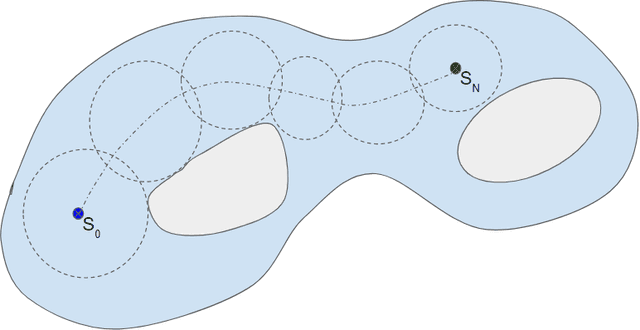Venkateswaran P. Krishnan
A Diffeomorphic Aging Model for Adult Human Brain from Cross-Sectional Data
Jun 28, 2021



Abstract:Normative aging trends of the brain can serve as an important reference in the assessment of neurological structural disorders. Such models are typically developed from longitudinal brain image data -- follow-up data of the same subject over different time points. In practice, obtaining such longitudinal data is difficult. We propose a method to develop an aging model for a given population, in the absence of longitudinal data, by using images from different subjects at different time points, the so-called cross-sectional data. We define an aging model as a diffeomorphic deformation on a structural template derived from the data and propose a method that develops topology preserving aging model close to natural aging. The proposed model is successfully validated on two public cross-sectional datasets which provide templates constructed from different sets of subjects at different age points.
A method for large diffeomorphic registration via broken geodesics
Jan 03, 2021



Abstract:Anatomical variabilities seen in longitudinal data or inter-subject data is usually described by the underlying deformation, captured by non-rigid registration of these images. Stationary Velocity Field (SVF) based non-rigid registration algorithms are widely used for registration. SVF based methods form a metric-free framework which captures a finite dimensional submanifold of deformations embedded in the infinite dimensional smooth manifold of diffeomorphisms. However, these methods cover only a limited degree of deformations. In this paper, we address this limitation and define an approximate metric space for the manifold of diffeomorphisms $\mathcal{G}$. We propose a method to break down the large deformation into finite compositions of small deformations. This results in a broken geodesic path on $\mathcal{G}$ and its length now forms an approximate registration metric. We illustrate the method using a simple, intensity-based, log-demon implementation. Validation results of the proposed method show that it can capture large and complex deformations while producing qualitatively better results than the state-of-the-art methods. The results also demonstrate that the proposed registration metric is a good indicator of the degree of deformation.
 Add to Chrome
Add to Chrome Add to Firefox
Add to Firefox Add to Edge
Add to Edge